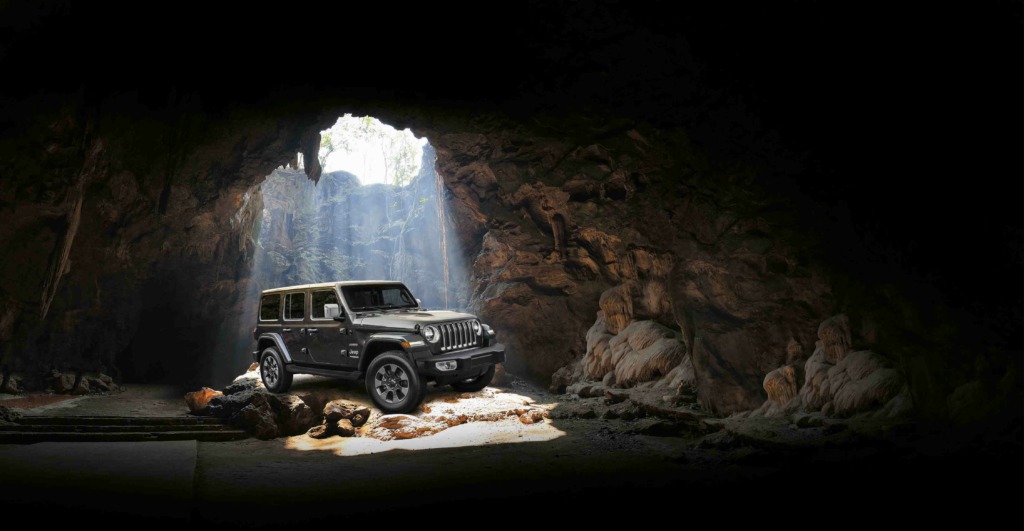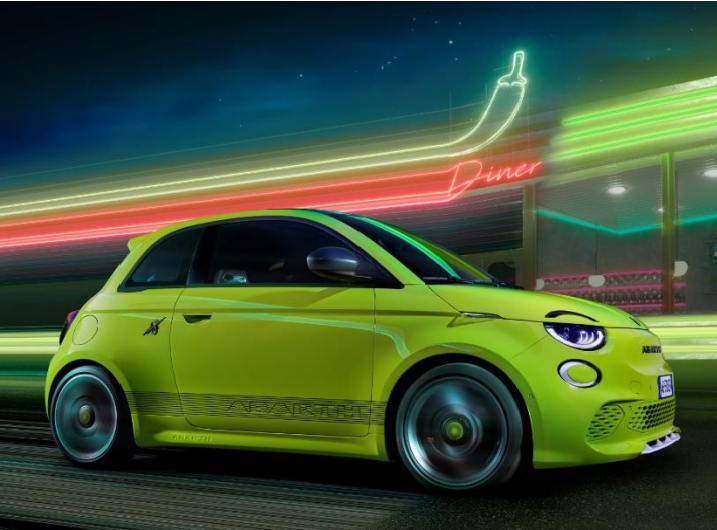If you thought Jeep’s Wrangler was strictly for Californian rock hoppers and D-list boy band members, think again, presenting the Jeep Wrangler Rubicon.
Background
The Jeep Wrangler is an icon that has managed to remain loyal to its roots while adapting to the changing spirit of the times. If you think that it’s strictly for Californian rock hoppers and D-list boy band members, then think again. This latest ‘JL’-series fourth generation model is the most credible Wrangler yet, especially in this top ‘Rubicon’ form, offering a PHEV option and justifying what Jeep sees as its position as the only true off-road company in the market.
The Jeep Wrangler is one of the most iconic serious SUVs on the planet and has never been a car to shy away from even the toughest SUV conditions. Like those this ‘JL’-series model was launched into at the end of 2018. By then, the European market had decided what a fashionable SUV should be like and it wasn’t anything remotely resembling this. But the Wrangler’s always gone its own way and for the few who want something more authentic, its appeal remains very much unique.
The ‘JL’ design offers better off road angles, more ground clearance and a tighter turning circle. But at the same time, today’s Wrangler needed to offer slightly wider appeal. For that, brand owners Stellantis knew that a completely fresh generation of powertrains would be required. And areas like ride quality, refinement and day-to-day usability would need to be completely re-evaluated. As they have been with this ‘JL’-series car, which has recently gained a PHEV ‘4xe’ plug-in powertrain option. It’s a Wrangler – but perhaps not quite as you know it. Let’s take a closer look at the wheel of the most focused ‘Rubicon’ version.
The Jeep Wrangler Rubicon Driving Experience
Previous Wranglers never had to be very good on road. As long as they didn’t shake your fillings out on the way to your surf shack, all would be forgiven once you set a tyre on the rough stuff. But Marlboro men are in short supply these days and to keep this car in customers, Jeep had to appeal beyond those who might use their cars as weekend mountain playthings. Without diluting what makes a Wrangler a Wrangler. No small task. How successful you’ll perceive the designers’ efforts to have been depends whether you’ve experienced previous versions of this Jeep. If you haven’t, then you’re likely to find the wind noise, the rumbly demeanour and the vague steering all pretty crude. Those coming to this car from an older Wrangler though will find this ‘JL’-series model a vast improvement. The revised steering’s much better and the revised five-link suspension means that potholes no longer feel like craters.
The main changes though with this MK4 design have taken place beneath the bonnet. Buyers are now limited to petrol power, with the most affordable choice being the brand’s 272hp conventional 2.0-litre petrol turbo unit. This also comes in ‘4xe’ Plug-in form, which combines the 2.0-litre engine with a 400V 17kWh battery pack powering a pair of electric motors, one mounted ahead of the engine, with the other just forward of the gearbox. Power is sent from the combustion engine to both axles via an 8-speed automatic gearbox and there’s a total 370hp output. There are three driving modes – ‘Hybrid’, ‘Electric’ and ‘eSave’.
Whichever powertrain you choose for your Wrangler Rubicon, as with all proper off roaders, there’s a two-speed transfer case offering a series of dedicated 4×4 driving settings – ‘4H’, ‘4H part-time’ and the ‘4LO’ crawler gear. With the slightly more road-orientated ‘Sahara’ and ‘Overland’ variants, all this works through a ‘Command-Trac’ 4WD system, but with this more serious top ‘Rubicon’ derivative, there’s a heavy duty ‘Rock-Trac’ 4WD set-up, which uses a tougher low range crawler ratio. ‘Rubicon’ models also get detachable ‘Sway bars’ for extra suspension travel; heavy duty Dana front and rear axles that can be manually locked with the brand’s ‘Tru-Lok’ electric front and rear axle lockers; and gnarlier BF Goodrich 32-inch tyres. All of this delivers an extreme level of off road capability. And once you’ve experienced it, you’ll view this Jeep in a whole different light.
The Jeep Wrangler Rubicon Design and Build
The Wrangler format is iconic: a simple boxy body dropped onto an old-style ladder-frame chassis with a folding screen, detachable doors and a removable roof. You don’t mess with that. Or with the familiar frontage, which offers up the usual circular headlights and familiar seven-slot grille.
Look more closely though and you’ll find that much has changed, as the designers have sought to subtly evolve the look for this fourth generation ‘JL’-series model. That front grille for instance these days has a canted upper section and its outer slats intersect with headlights that now feature full-LED beams from Magnetti Marelli. Even the vertical windscreen is different – it’s now not quite so vertical and features a new 4-bolt design at the top of the frame that allows it to fold down far more easily, though you’ve still got to get your socket set out to do it
Up-front, you’re faced with a dashboard structure as bluff as the north face of the Eiger, but it’s much more appealing than the boring plasticky layout that characterised the interior of the previous generation ‘JK’-series model. The coloured fascia frontage aims to reference the metal-panelled dashboards used in much earlier Wranglers and the previous tightly sectioned centre stack has given way to a more open layout, though one absolutely festooned with knobs and buttons. Everything’s of much better quality than anything that buyers of this model have seen before. Plus there’s a sophisticated 8.8-inch centre-dash ‘Uconnect’ infotainment screen and a further 7-inch TFT display between the conventional dials in the instrument binnacle. We should talk about the open air aspect; all Wranglers come as standard with a three-piece Modular Hard Top with these lift-off front panels. The rear section must be removed with a socket set
The Jeep Wrangler Rubicon Market and Model
Pricing for this Rubicon model starts at £57,400 for the 2-Door version; add £1,500 more for the 4-Door body shape most will want. These prices are for the conventional 2.0-litre GME petrol turbo unit. You’re going to need over £60,000 for the Plug-in ‘4xe’ versions.
For true Wrangler aficionados, only this ultimate ‘Rubicon’ level of trim will do. It gets the more serious ‘Rock-Trac’ 4WD system, which uses a tougher low range gear ratio, heavy duty front and rear axles and ‘Tru-Lok’ electric front and rear axle lockers to tackle really extreme off road trails. Also helping a Wrangler Rubicon in dealing with this type of terrain are the 32-inch BF Goodrich Mud-Terrain tyres and an electronic front sway-bar disconnect system to provide additional wheel travel when conditions call for it.
As for options, well we think the key thing to decide here is how you want your Wrangler’s roof to be. Some might find the three lift-out panels of the standard ‘Freedom Top’ to be rather fiddly and cumbersome, which is why Jeep offers some other choices that replace the detachable panels with various forms of fabric hood. On the 2-Door variant, this takes the form of a manually-operable ‘Premium Soft Top’, covering the whole of the roof and available with either clear or tinted windows. On the 4-Door version, you can have what the company calls a ‘Black Sunrider Soft Top’ that slots in behind the two removable ‘Freedom Top’ panels (these available either in black or body colour). The ‘Sunrider’ hood folds back manually like the roof on a Mazda MX-5. Or, even better, you can have it specified in ‘Sky One-Touch Power Top’ form, with electrical operation.
The Cost of Owning a Jeep Wrangler Rubicon
For the conventional 2.0-litre petrol 4-Door Rubicon, you’re looking at 28.2mpg and 213g/km; or 28.2mpg and 211g/km for the 2-Door. Insurance varies between groups 37D and 41D. The Plug-in 4xe version obviously does much better, thanks to its 25 mile all-electric range.
What else? Well like all Jeeps, this one comes with the benefits of the ‘Jeep Wave’ loyalty programme. This gives you three years of complimentary servicing and roadside assistance. Across the range, garage visits, by the way, are required every year or every 9,000 miles, whichever comes first. Wrangler owners also get a dedicated Jeep Customer Care service where a team of expertly trained agents will be available 24/7 to answer any questions about your journey
What else might you need to know? Well the CO2 figures quoted and the high purchase for the conventional petrol version will see the few company Wrangler users paying a hefty 37% Benefit-in-Kind tax and a £310 Luxury Car Vehicle Excise Duty supplement, which means a total road tax outlay of £450 in the first six years of ownership. At least residual values should be strong. Industry experts CAP HPI reckon that after the standard three year/60,000 mile period, a Wrangler 4-Door 2.0-litre petrol variant would still be worth 41% of its original purchase price.
Summary
You’ve still got to be serious about hard core off-road driving to consider a Jeep Wrangler – but not quite as serious as you had to be before. This current ‘JL’-series model offers considerable improvements in refinement, quality and technology. Which allows it to make a decent fist of providing versatile family transport for the user who doesn’t mind making a few sacrifices at the altar of comfort, ride and handling. It’s got a style all of its own, but its heart and soul remain on the Rubicon Trail rather than on the Kings Road. Thank goodness for that.
Of course, it’d be a terrible choice if your SUV will have a heavy diet of on-road work – but that’s like criticising a supercar for having a small boot. Horses need to be matched with courses and if, just occasionally, those will take you to the back of beyond, you’ll be glad you chose a Wrangler for the trip. If previous generation versions of this Jeep weren’t for you, you probably still won’t like this one, even if it does have a PHEV powertrain. No problem: the market’s stacked with compromised alternatives. But if you’ve always wanted an excuse to choose one of these, this ‘JL’-series model’s extra polish and new-found sophistication provides it. It’s now a vastly more capable all-rounder. But it’s still very much a Wrangler. And that’s all that really matters. If you are interested in the Jeep Wrangler Rubicon enquire now.





